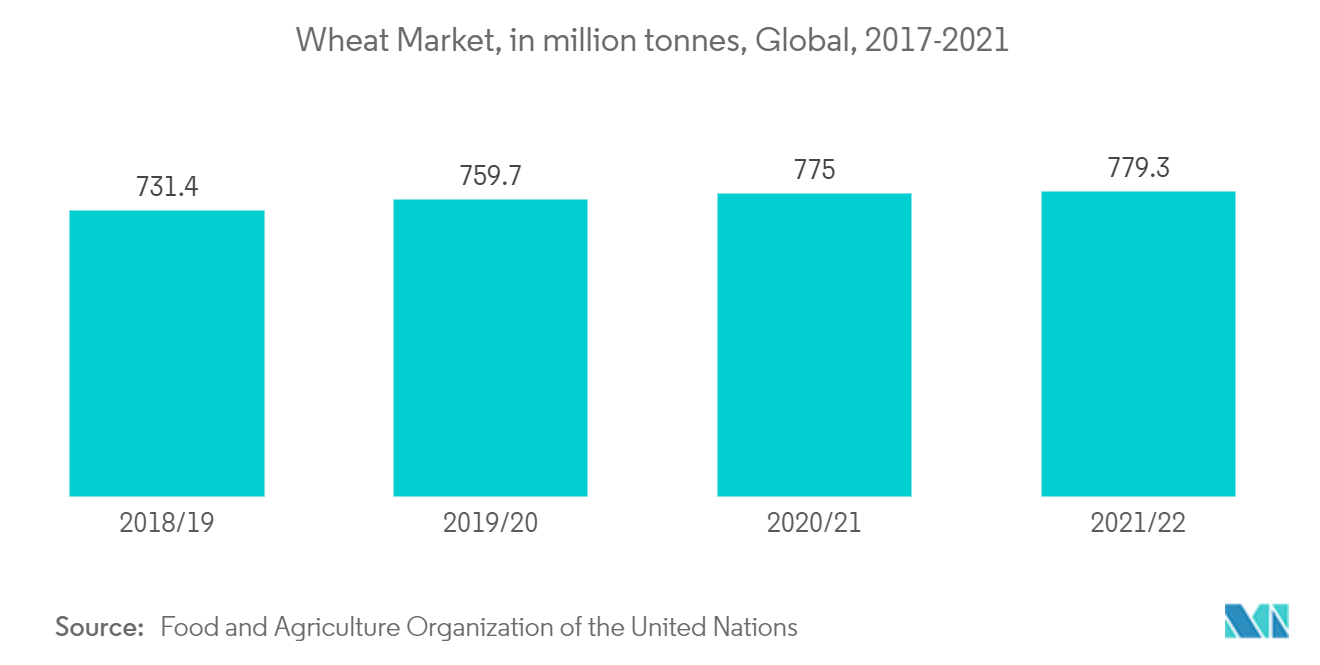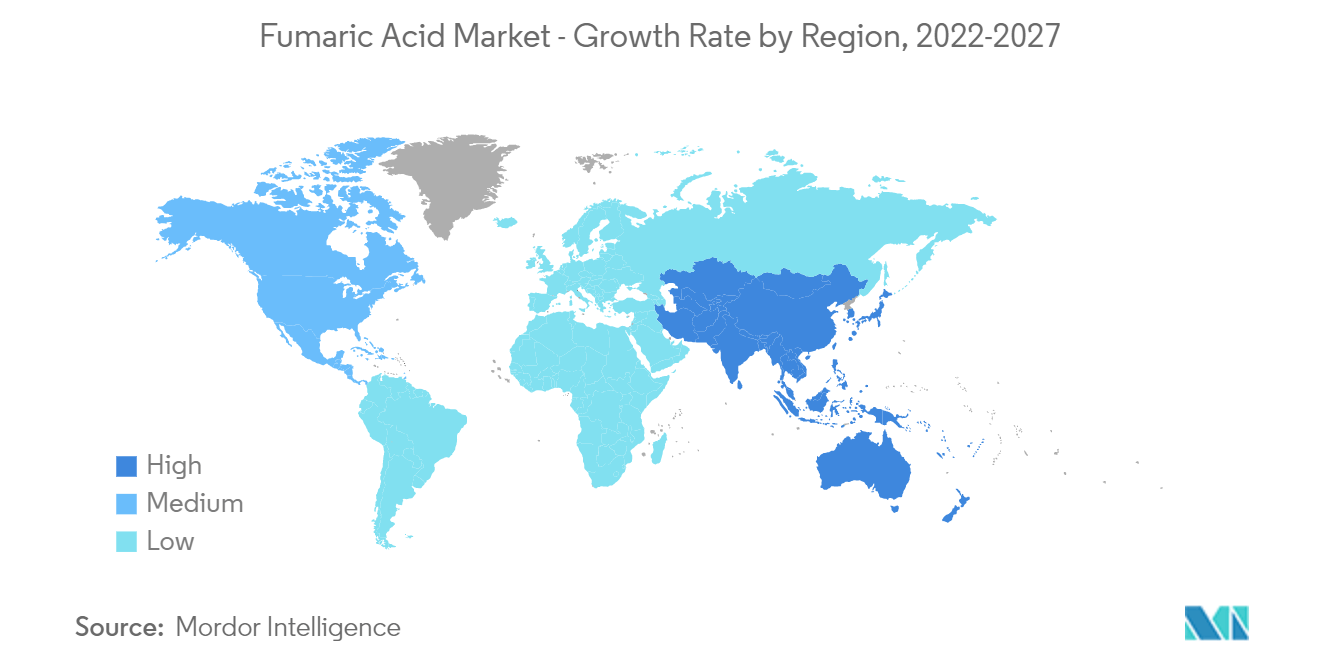Market Trends of Fumaric Acid Industry
This section covers the major market trends shaping the Fumaric Acid Market according to our research experts:
Food and Beverage to Dominate the Demand
- Fumaric acid is solid organic food acid extensively used as an additive in the food and beverage industry. It is considered a non-toxic food additive, which can be used as a flavoring agent, a pH control agent, an antimicrobial agent, or a pickling agent in food products and beverages.
- Fumaric acid is widely used in bakeries, beverages, and desserts, like wheat, corn tortillas, refrigerated biscuit doughs, sourdough and rye bread, fruit juice, wine, jellies and jams, gelatin desserts, alginate-based desserts, pie fillings, etc.
- According to the Food and Agriculture Organization of the United Nations (FAO), world trade in cereals in 2022/23 is forecast at 469.6 million tonnes, up by 2 million tonnes since the July forecast but still 1.9 percent below the 2021/22 level.
- According to FAO, at 191.3 million tonnes, the forecast for world wheat trade in 2022/23 (July/June) remains nearly unchanged since July and still points to a 1.8 percent decline from 2021/22 (July/June) level.
- FAO predicted the world rice production in 2022/23 to be 512.6 million tonnes (milled basis), 2.4 percent below the 2021 all-time peak.
- According to the Ministry of Agriculture & Farmers Welfare, the production of food grains in India is estimated at a record 314.51 million tonnes, which is higher by 3.77 million tonnes than the production of foodgrain during 2020-21.
- Total Oilseeds production in India during 2021-22 is estimated at a record 38.50 million tonnes which is higher by 2.55 million tonnes than the production of 35.95 million tonnes during 2020-21.
- Due to the above reasons, the market is expected to have positive growth in the forecasted period.

Asia-Pacific to Dominate the Market
- The Asia-Pacific region may dominate the global fumaric acid, owing to demand from countries like India, China, and Japan.
- According to the Food and Agriculture Organization of the United Nations (FAO), Forecast at 1,471 million tonnes, the aggregate 2022 cereal output in Asia is 2.2 percent above the five-year average.
- In China, processed fruits, pork, dairy, and some specialty grains and legumes are the food products that may drive the growth of the food processing industry in the country. Thus, the food and beverage industry is offering opportunities for investment, which is further expected to create demand for new equipment used in such plants.
- The food processing sector in India has been primarily export-oriented. However, the local market is also growing, owing to urbanization and consumer preferences. India exported processed food valued at around USD 3770.1 million which mainly consists of processed fruits, vegetables, and meats, including seafood, along with a sizeable chunk of alcoholic beverages.
- According to FAO, the far east Asia subregional aggregate cereal output is forecast at 1,369 million tonnes (rice in paddy equivalent) in 2022, slightly above the previous five-year average. Below-average outputs are expected in the Democratic People's Republic of Korea, Nepal, Myanmar and especially in Sri Lanka,
- According to the agriculture ministry of India, rice production is expected to be 130.29 million tonnes. Wheat production could increase to 106.84 million tonnes, 2.96 million tonnes higher than the past five years' average of 103.88 million tonnes.
- The Japanese chemical industry is the country's 2nd largest manufacturing industry behind transportation machinery. Transportation machinery includes Japan's most notable industry, automotive, which is highly dependent on raw materials provided by the chemical industry. Mitsubishi Chemical Corp., Mitsui Chemicals Inc., Sumitomo Chemical Co. Ltd, Toray Industries Inc., and Shin-Etsu Chemical Co. rank among the world's top 30 chemical companies measured in chemical sales.
- Thus, the aforementioned factors are projected to significantly impact the market in the coming years.


